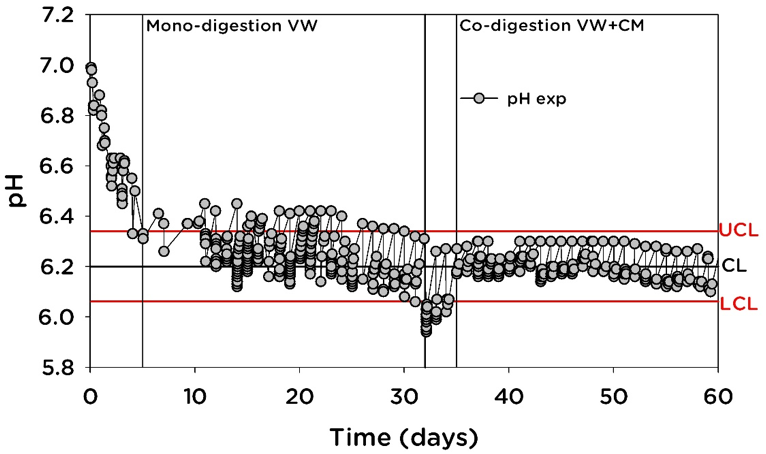 |
|
The anaerobic digestion of vegetable waste (VW) often shows the accumulation of fatty acids and low buffering capacity that promotes instability and low methane productivity. This work evaluated the anaerobic co-digestion of VW with cow manure (CM) as a strategy to improve the process stability. As a reaction system, a 4 L semi-continuous stirred tank reactor with an HRT of 20 days and fed with a substrate formulation of 40 g of VS was used in two periods: 34 days of VW mono-digestion and 26 days of VW:CM co-digestion. The mono and co-digestion processes were numerically evaluated through three analysis tools: a proposed co-digestion model embedded in the Anaerobic Digestion Model No. 1 structure, statistical process control theory, and modeling the pH dynamics as the response of a first-order linear system to an impulse manipulation. The mono-digestion process showed productivity of 0.381 L CH4 L digester-1 d-1, which increased by 14 % during co-digestion. The results also indicated that in VW:CM co-digestion, the pH dynamics presents a slower response to the daily feed induced by pulses, keeping the values of this parameter within the statistical stability range; as well as the early warning indicator IA/BA (ratio between intermediate and bicarbonate alkalinity) outside the failure thresholds. It was shown that the addition of CM to a mono-digestion of VW increases the buffer capacity of the system and the production of CH4, promoting a stable and efficient process.
Keywords: Anaerobic co-digestion, Vegetable waste, Cow manure, Anaerobic Digestion Model No. 1, Process stability.
|
|
 |

